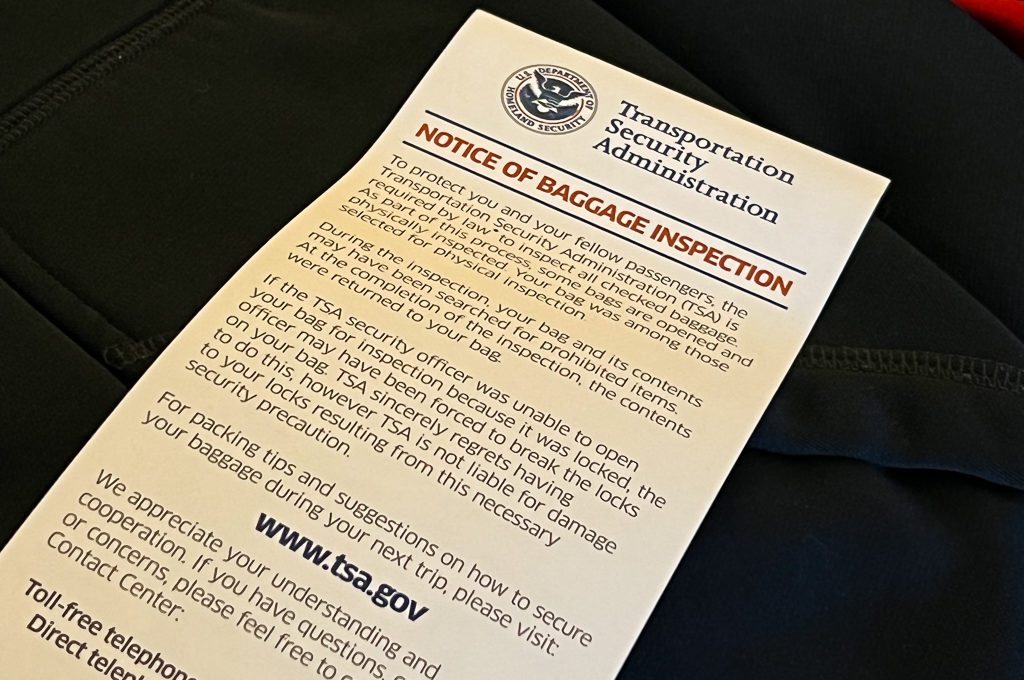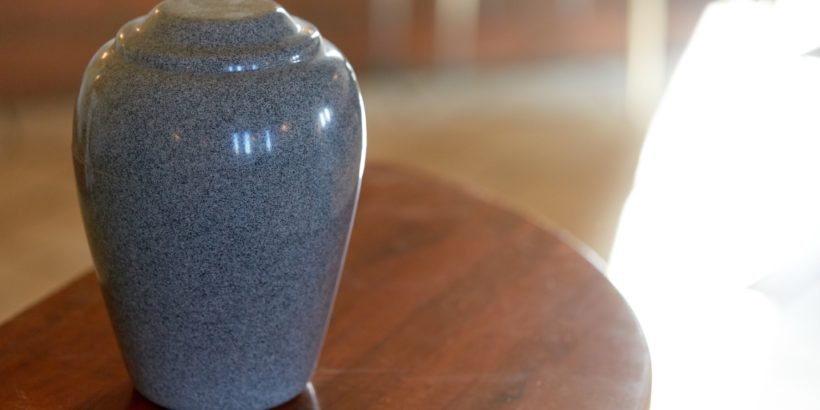Dealing with the loss of a loved one is already a tough time.
But when there is also travel involved, logistics can add to your worries and stress.
If you’re thinking about taking ashes or cremated remains through TSA and on a plane, make sure that you are aware of some of the key restrictions so that you don’t have issues at the security checkpoint.
Below, we will break down all of the restrictions you need to consider and also provide you with some guidance for dealing with individual airlines.
Table of Contents
Can you take ashes (cremated remains) on a plane?
Yes, you can take ashes (cremated remains) on a plane.
However, you need to make sure that you are transporting them in a container that can pass through an x-ray machine at a TSA security checkpoint.
In addition to that, you might need to bring a death certificate and cremation certificate to comply with airline requirements. Finally, keep in mind that some airlines do not allow cremated remains to travel in checked baggage.
Taking ashes on as a carry-on
Most airlines will recommend you to take ashes on the plane as a carry-on item since you can reduce the odds of them getting damaged.
Some airlines, such as American Airlines will treat your cremated remains as a carry-on bag. But other airlines like JetBlue do not count cremated remains as a personal item or carry-on bag. So you always want to verify with airlines if the remains will be considered a carry-on.
As far as getting through TSA, they do allow you to take cremated remains through the security checkpoint. However, some containers like lead-based ceramic, stone, bronze, or other metal urns can be problematic for the security scanners.
TSA states:
If the container is made of a material that generates an opaque image, TSA officers will not be able to clearly determine what is inside the container and the container will not be allowed
For that reason, you should check with the funeral home to see if they can provide you with a TSA compliant container for human remains.
These will typically be containers made of lighter materials such as:
- Non-lead lined ceramic
- Covered calabash
- Sachet/fabric
- Biodegradable paper
- Cardboard
- Wood
- Glass
- Plastic
All of these can all easily be x-rayed. Sometimes these are referred to as “temporary containers” and ideally the ashes would be sealed in a bag on the inside of one of these containers to prevent spilling.
You can always remove the ashes from the permanent container and place them in the temporary container so that your (empty) permanent container can get through security on its own. The permanent container might still trigger a closer inspection but because it will be empty, it shouldn’t be a problem.
Try to give yourself some extra time to get through security because sometimes powdery substances can trigger a closer inspection and slow you down through security.
Gathering your documents
It might make your travels easier if you have a death certificate on hand. In fact, some airlines may require you to show such documentation. Try to get your hands on a certified copy and if you need to contact your local Registrar or Vital Records Office.
In addition to that, some airlines like JetBlue also require an original/certified document or letter from the funeral director or crematorium that performed the cremation.
This should be given to you at the time of cremation as it is a legal document that identifies the person cremated and provides other relevant information about the crematorium.
So make sure you always gather the necessary documents.
These documents could also be helpful for any TSA agents who might be curious as to the contents of your container. But keep this in mind: TSA agents are not allowed to open containers of cremated remains, even if you request them to.
They do this out of respect for the deceased and for practical concerns. You could imagine the type of uproar that would develop if a TSA agent accidentally mishandled some remains during a security checkpoint. It would just be very bad.
What to do while on the plane
Whenever you get on the plane, the cremated remains will probably have to be stored underneath the seat in front of you or in an overhead storage bin. It’s very likely that you will not be able to hold the container with you during taxi, takeoff and landing. So be sure that your container fits within the carry-on requirements for your airline.
Also, it’s not a good idea to open up your container while on the plane. That opens up the door for a spill to happen and you could imagine how both you and an unsuspecting passenger could feel if ashes were to be spilled on their lap.
If for whatever reason you are unsure about whether or not your container is TSA compliant you can bring this up at the time of check-in. At that point an airline agent may be able to check your container although you will want to make sure that it is safe to check by properly packing it.

Taking ashes in your checked baggage
Bringing your cremated remains in your checked baggage is not recommend it but it is still doable. The major consideration here is safely packing your urn or similar container so that it doesn’t break or spill.
We did an extensive article on traveling with glass and a lot of the same precautions could be used here. It basically comes down to making sure the container is extra secure with additional padding to prevent it from breaking. A funeral director could probably assist you with packing tips for your particular urn.
The one thing I might add is to place a copy of the death certificate and/or cremation certificate right by or even attached to the container. This will provide some instant context to a TSA agent if they have to open up your luggage.

Traveling internationally
If you are traveling internationally with cremated remains you may need to supply some type of extra documentation. Contact a local consulate of your destination country or burial advisor to see what is possible.
To locate embassies and consulates check this official US government website.
You may have to transfer the remains to another funeral home in the destination country although sometimes your funeral home can take care of the arrangements. So I would advise you to speak to a funeral director to get guidance on your specific situation.
If your goal is to spread the ashes of a loved one, be sure to contact the specific location you’ll be heading to.
Some places have specific rules in place for spreading ashes and it’s best to make sure you are not violating those especially if there is some type of public health concern.
If you are arriving in the US an authorized stamp may be required but sources like the CDC state that no death certificate is needed for cremated remains as “cremated remains are considered to be noninfectious and may enter the United States without a death certificate or other documentation, regardless of the cause of death.”
Different airline policies on cremated remains
Below, you can find a link to more information on a specific airline’s cremated remains policy. Some airlines are much better than others with providing helpful information so you might have to call in if you have specific questions.
Once again, the relevant questions want to ask include:
- Do I need a death certificate?
- Do I need a cremation certificate?
- Will the container count as my carry-on or personal item?
- Is the container allowed in checked baggage?
Alaska Airlines: “Customers on Alaska Airlines passenger flights may bring cremated human remains on board as carry-on or checked baggage.”
American Airlines: “When you travel with cremated remains, they’ll be treated as your carry-on bag.”
Delta: “You can carry on or check cremated remains. A death or cremation certificate is required.”
Frontier Airlines: “Crematory remains (human or animal) may be transported under certain conditions.”
Hawaiian Airlines: “You may carry-on or check-in the deceased in an urn or crematory container.”
JetBlue: “Cremated human remains must be transported in a crematory container (urn) and will only be accepted as a carry-on item.”
Southwest Airlines: “Customers may take cremated remains onboard as a carryon item under certain conditions. However, Southwest Airlines does not accept human remains as checked baggage.”
Spirit Airlines: Allowed as both carry-on or checked baggage but with restrictions.
United Airlines: “If you’re traveling with cremated human remains, we suggest that you transport them as a carry-on bag.”
Speak with a specialist
Airlines sometimes have special departments that deal with travel arrangements that arise from the loss of a loved one.
For example, American Airlines has a special TLC department. There, specialists can assist you with making arrangements for the transportation of caskets but also cremated remains.
You can sometimes find price estimates on shipping cremated remains. For example, prices from the US to various countries are usually about $220.
These departments would be a good place to call if you have questions about transportation logistics or prices.
- United Airlines: TrustUA
- Delta: specialized care
- Southwest Airlines Cargo Customer Care Center: (888) 922-9525
Shipping cremated remains
If you don’t want to deal with the hassle of flying with cremated remains or you are unable to do so due to international restrictions, you can still try shipping cremated remains in the mail. The thing is, there are some very specific rules for doing so.
Cremated remains may only be shipped using Priority Mail Express. And if you are shipping internationally, you will need to use Priority Mail Express International.
US Postal Service does require the use of Label 139 to ship cremated remains so keep that in mind. You can get the label from The Postal Store or from a retail counter.
If you want to arrange shipment you can visit your local post office but I would suggest that you work with a funeral Director at the funeral home or crematorium. Read steps on how to package cremated remains for shipping here.
Also, something to keep in mind is that shipping internationally can be tricky.
First, you have to make sure that the country can receive Priority Mail Express International service.
Second, you have to make sure that the country can receive cremated remains via mail. Again, check with the funeral director or with one of the embassies or consulates that you can find with the link above.
Final word
Traveling with cremated remains means that you need to be extra diligent about your container getting through TSA security. Make sure that the material is one of the materials mentioned above that are easily scanned by x-ray.
You also need to double check that you have the necessary documentation and that you understand if your container can be considered a carry-on or allowed in checked baggage.
Daniel Gillaspia is the Founder of UponArriving.com and the credit card app, WalletFlo. He is a former attorney turned travel expert covering destinations along with TSA, airline, and hotel policies. Since 2014, his content has been featured in publications such as National Geographic, Smithsonian Magazine, and CNBC. Read my bio.

